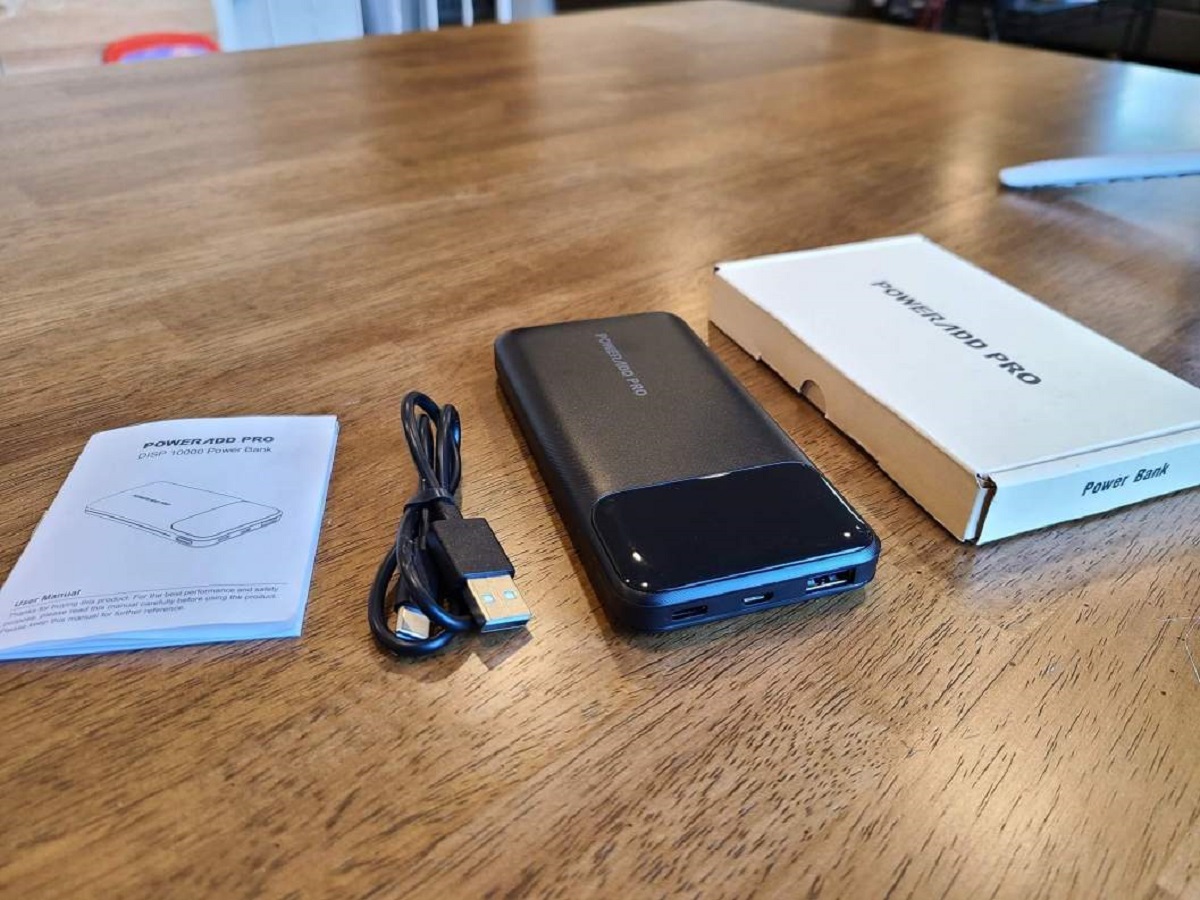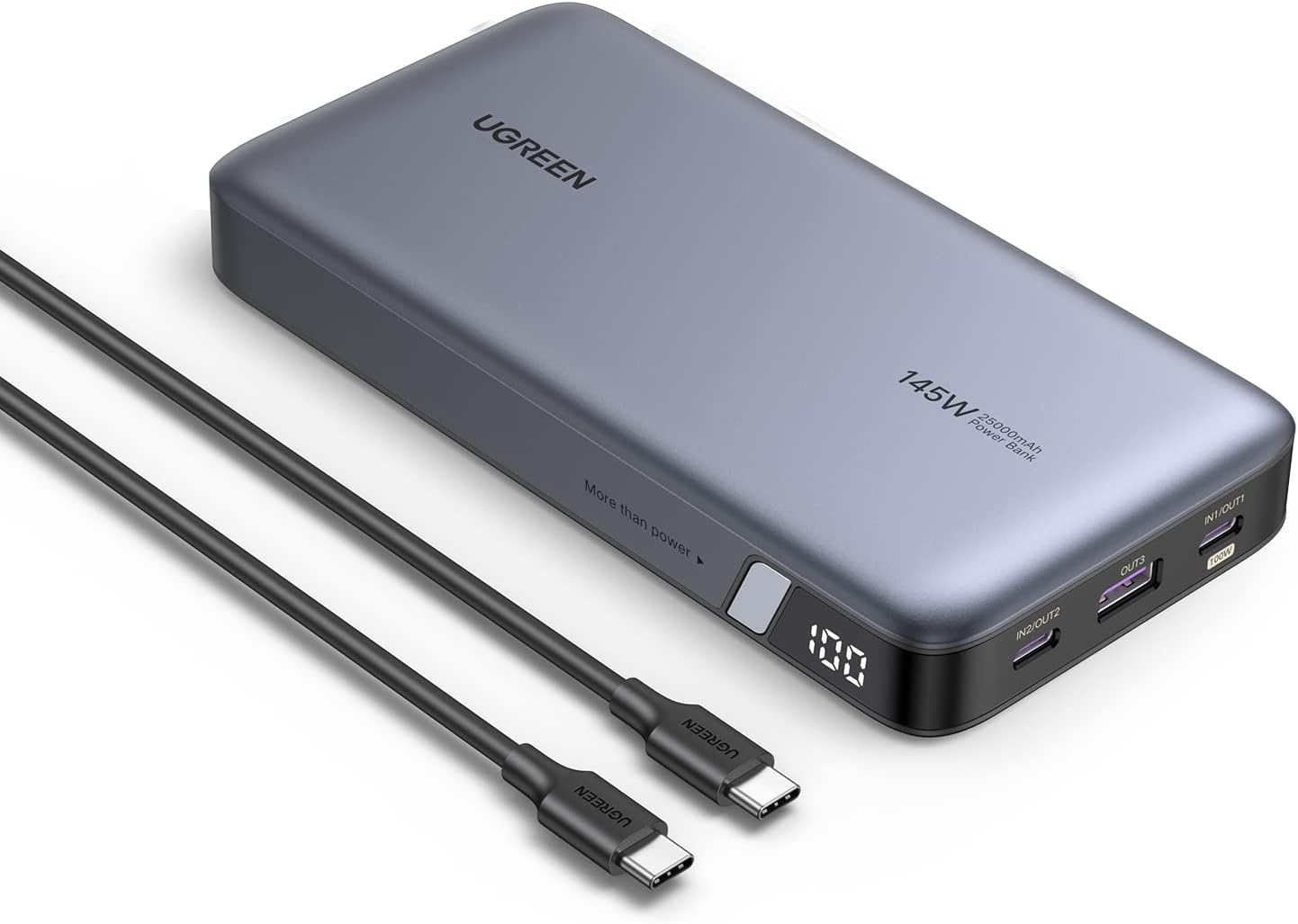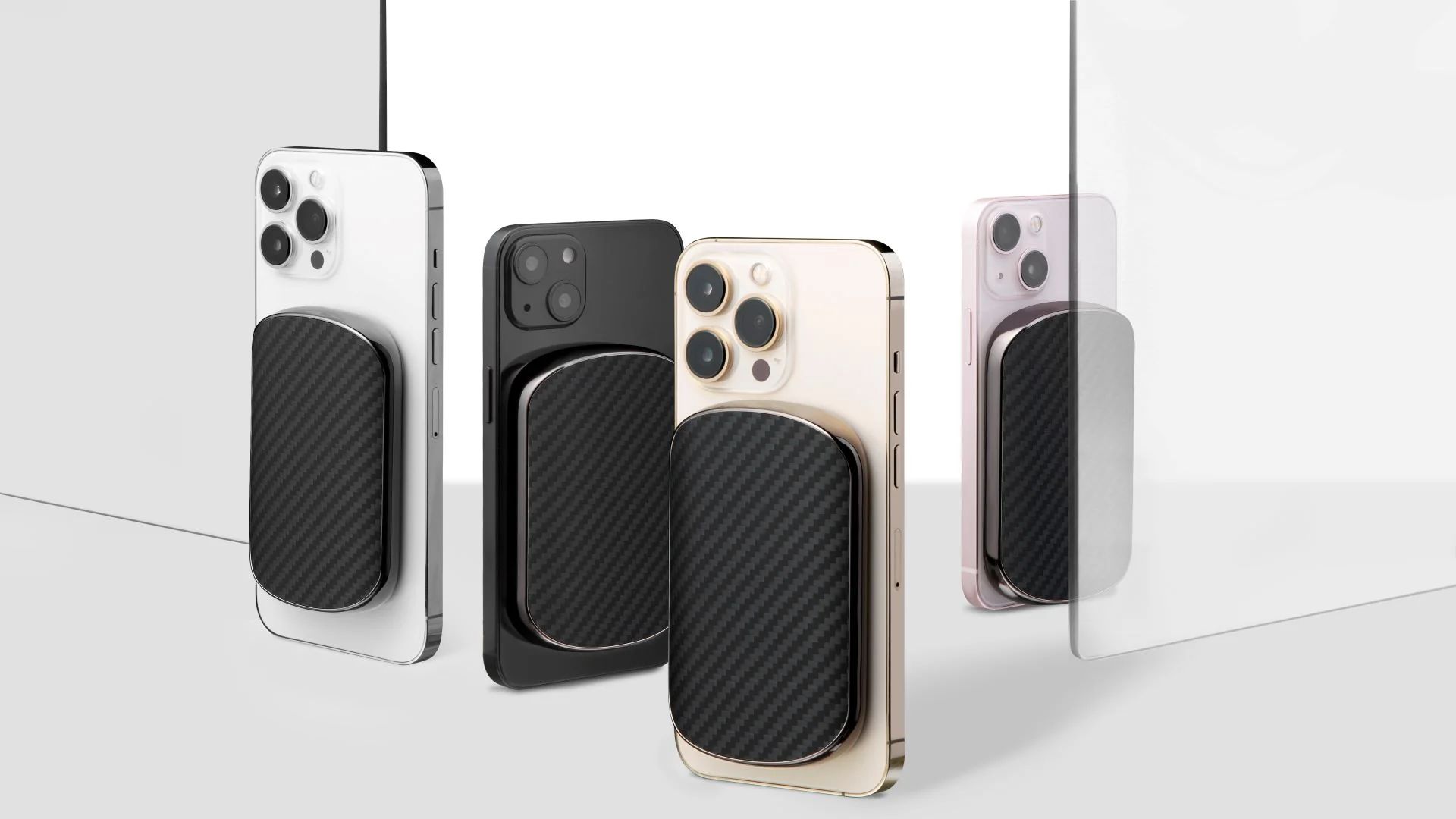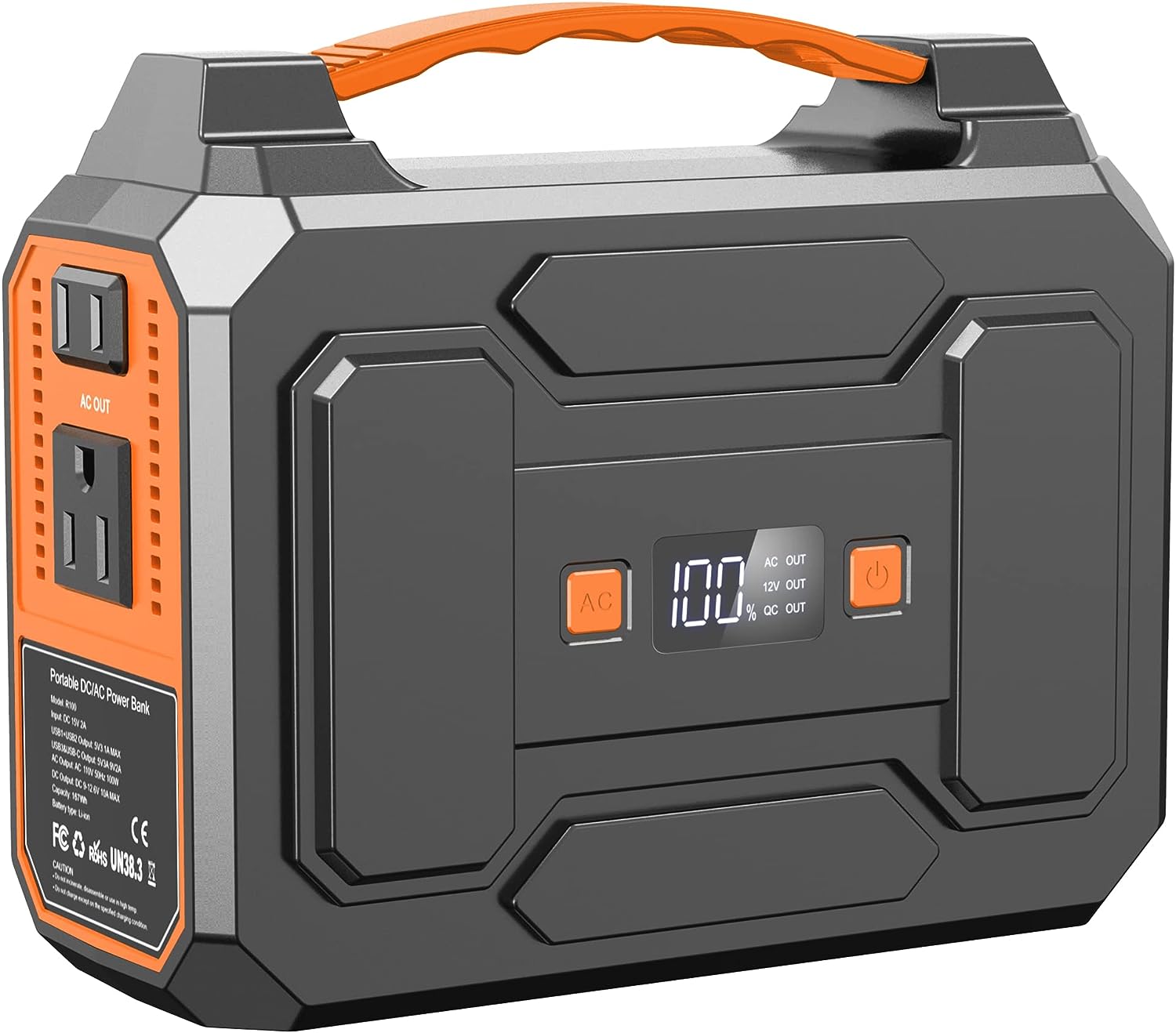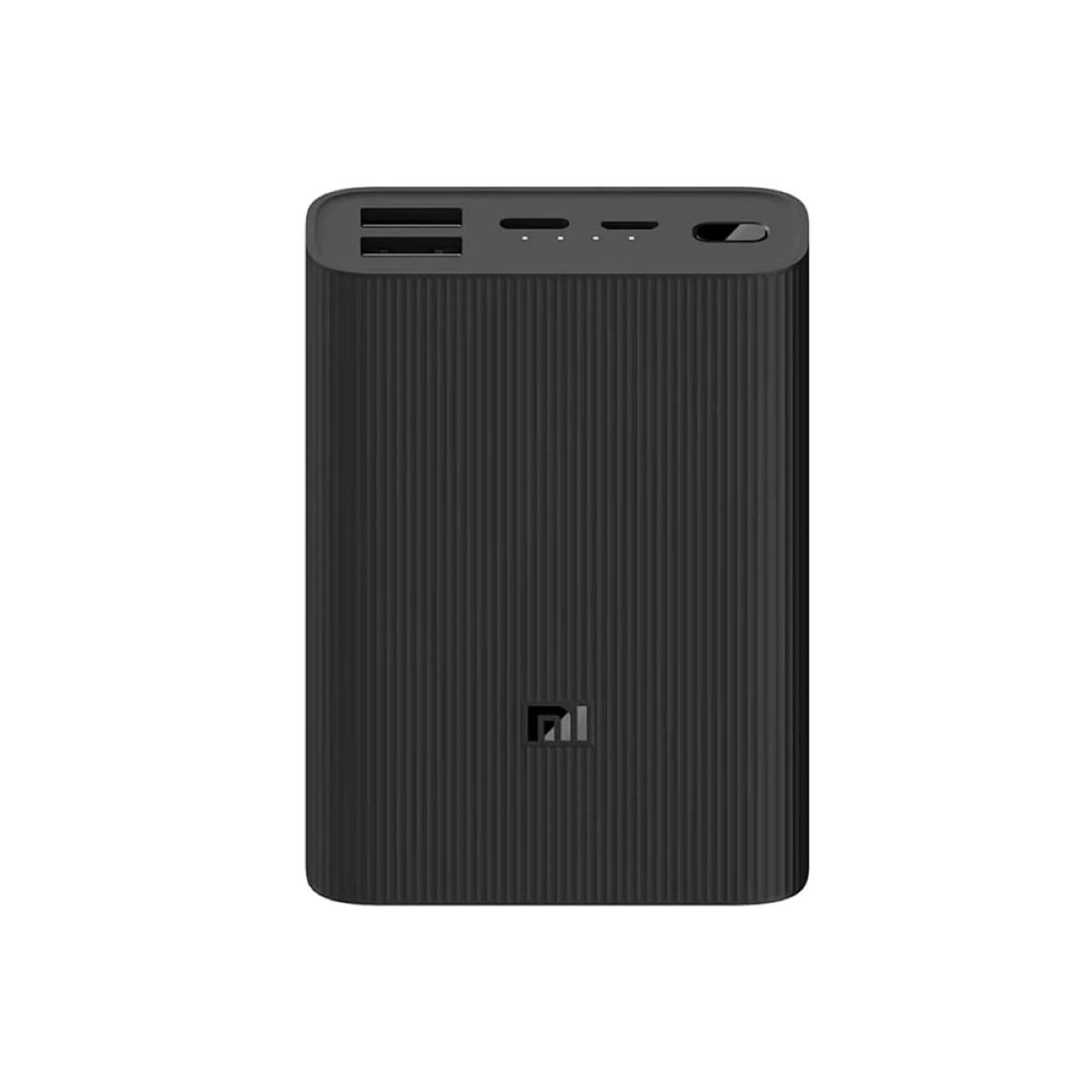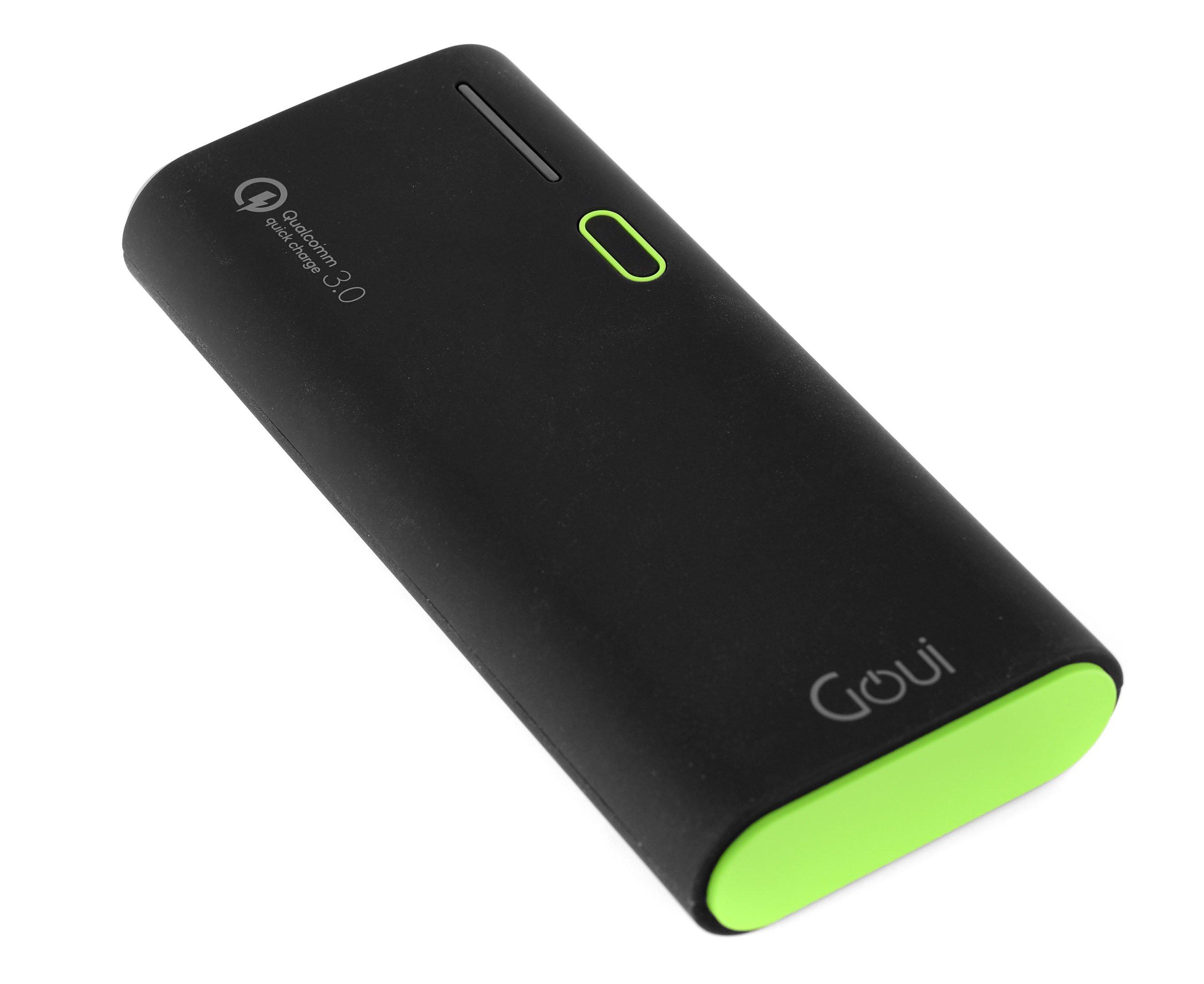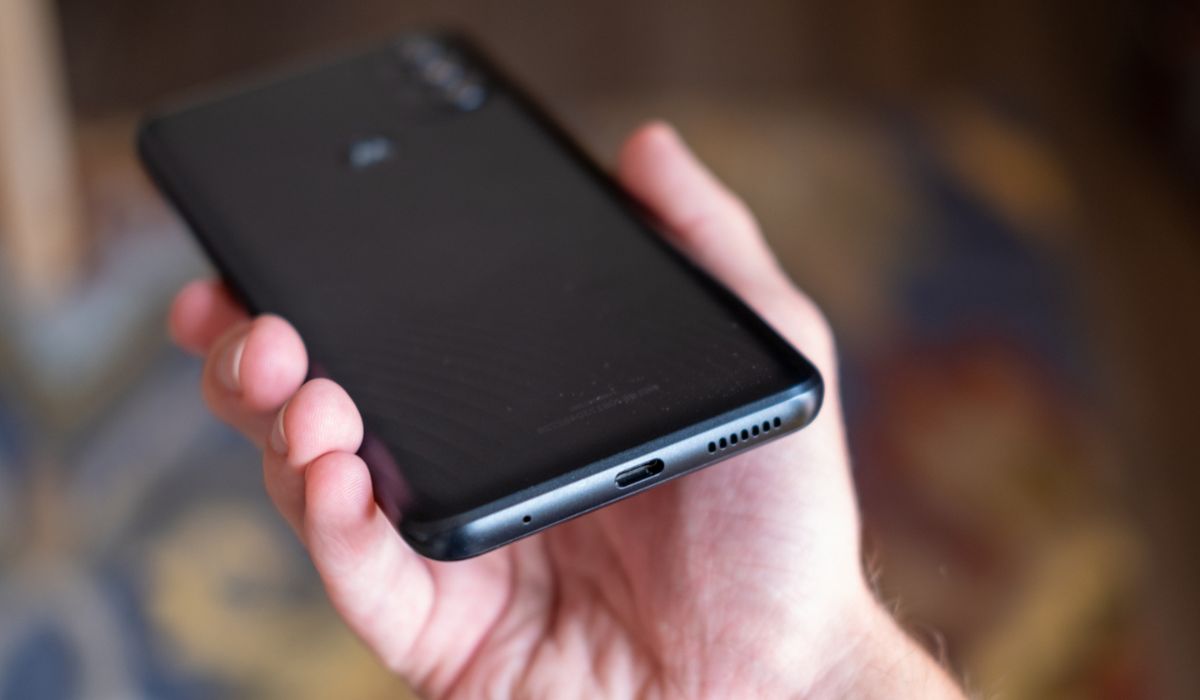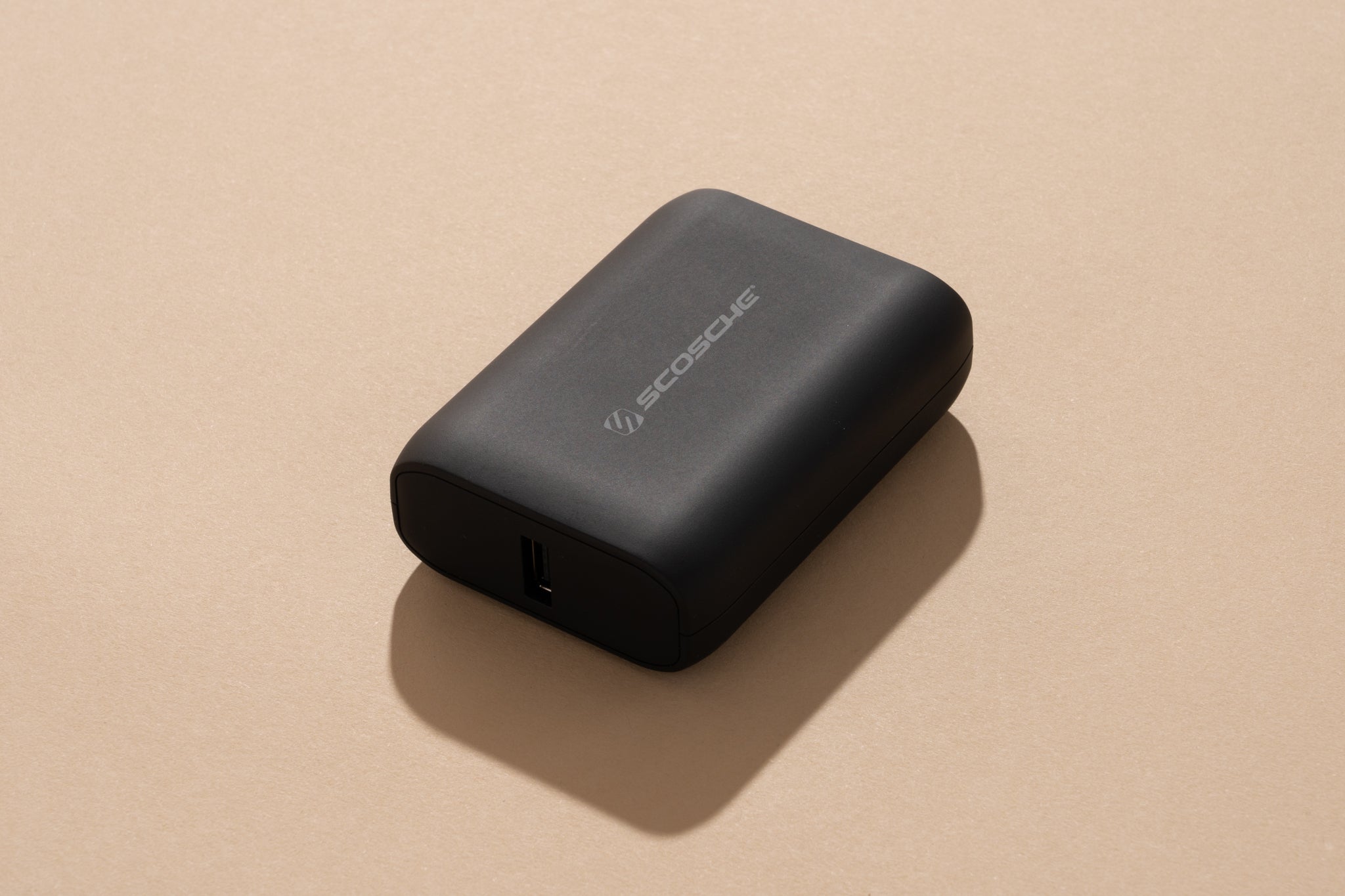Introduction
With the increasing reliance on smartphones, tablets, and other portable electronic devices, the need for a reliable and portable power source has become a necessity. This is where power banks come into play. These compact and portable devices allow users to charge their devices on the go, providing a convenient solution to battery drain.
One of the key features that sets power banks apart is the incorporation of PD (Power Delivery) technology. PD has revolutionized the way we charge our devices, offering faster and more efficient charging capabilities.
In this article, we will delve into the world of power banks and explore the importance of PD technology. We will provide an overview of power banks, explain what PD is, how it works, and discuss the benefits it offers. Additionally, we will compare PD power banks to regular power banks and provide some tips for choosing the right PD power bank for your needs. So, whether you’re a tech enthusiast or someone who relies heavily on their devices, this article will provide valuable insights into the world of PD in power banks.
Overview of Power Banks
Power banks, also known as portable chargers or battery packs, are compact and portable devices designed to provide a quick and convenient solution for charging electronic devices on the go. They serve as an external power source, allowing users to recharge their smartphones, tablets, and other USB-powered devices without the need for a wall outlet.
These devices are especially useful in situations where access to electricity is limited, such as during travel, outdoor activities, or emergencies. They eliminate the worry of running out of battery life when you need it most.
Power banks typically come in various capacities, ranging from a few thousand milliampere-hours (mAh) up to tens of thousands of mAh. The capacity of a power bank determines how many times it can charge your device before needing to be recharged itself. Higher capacity power banks can charge multiple devices or provide multiple charges to a single device.
In addition to varying capacities, power banks also come in different sizes, shapes, and designs. Some feature sleek and compact designs that easily fit in your pocket, while others are designed with multiple ports or built-in cables for added convenience.
When it comes to charging a power bank, most models can be recharged through a USB port, either via a wall charger or a computer. It is important to note that the charging time will depend on the capacity of the power bank and the power output of the charging source.
Overall, power banks have become an essential accessory for anyone who relies heavily on their electronic devices. They offer a portable and reliable charging solution, ensuring that you never have to worry about being stuck with a dead battery again.
What is PD in Power Banks?
PD, short for Power Delivery, is a fast-charging technology that has transformed the way we charge our electronic devices. It is a feature that can be found in some power banks, as well as in wall chargers and other charging accessories. PD allows for faster charging speeds and more efficient power delivery, making it an essential technology for those who are always on the go.
PD technology utilizes a higher power output than standard USB charging. While regular USB ports typically deliver 5 volts and 2.4 amps, PD-enabled devices can deliver up to 100 watts of power, enabling much faster charging times.
PD works by negotiating the most efficient and optimal charging conditions between the power source (such as a power bank) and the device being charged. The two devices communicate with each other to determine the ideal voltage and current levels, resulting in a faster and more efficient charging process.
One of the key benefits of PD is its ability to provide universal compatibility. PD-enabled power banks can charge a wide range of devices, including smartphones, tablets, laptops, and even gaming consoles. This versatility is due to the fact that PD can adapt to the specific power demands of different devices, ensuring a safe and efficient charging experience.
Another advantage of PD is its ability to charge devices while they are in use. Unlike some regular power banks that may only charge devices when they are idle or in sleep mode, PD power banks can deliver a sufficient amount of power to keep your device charged even during heavy usage.
In summary, PD technology in power banks provides faster charging speeds, universal compatibility, and the ability to charge devices while in use. It is an essential feature for those who rely on their devices throughout the day and need a quick and convenient solution for keeping their batteries charged.
How PD Technology Works
PD (Power Delivery) technology works by dynamically adjusting the voltage and current levels during the charging process to optimize the power delivery between the power source and the device being charged. This allows for faster charging speeds and more efficient energy transfer.
PD-enabled power banks and devices use a special communication protocol called the USB Power Delivery standard. This standard establishes a bidirectional communication channel between the power source and the device, allowing them to negotiate the most suitable charging parameters.
When a PD-compatible device is connected to a power bank or charger that supports PD, they begin the negotiation process. The device sends a request to the power source, indicating its power requirements. This includes the desired voltage and current levels for optimal charging.
Based on the device’s request, the power bank or charger responds with the available power profiles it can provide. These profiles consist of different voltage and current combinations that the power source can deliver.
The device then selects the most suitable power profile from the options provided by the power source. Once the selection is made, the power bank adjusts its output voltage and current to match the device’s requirements.
This dynamic adjustment allows for efficient power transfer without the risk of overloading or damaging the device. It ensures that the device receives the optimum amount of power for fast and safe charging.
PD technology also supports bi-directional power flow, meaning that power can be delivered from the device to the power bank as well. This enables features like device-to-device charging, where a PD-enabled power bank can act as a power source for another device.
Overall, PD technology simplifies the charging process by providing a standardized and efficient power delivery system. It ensures that devices receive the right amount of power they need, resulting in faster charging speeds and improved overall charging performance.
Benefits of PD in Power Banks
PD (Power Delivery) technology in power banks offers numerous benefits that enhance the charging experience for users. Let’s explore some of the key advantages of PD technology:
- Faster Charging Speeds: PD-enabled power banks can deliver higher power outputs, resulting in significantly faster charging times compared to standard USB charging. This is especially beneficial for devices with larger battery capacities, such as laptops or tablets.
- Efficient Power Delivery: PD technology optimizes the power delivery between the power bank and the device being charged, ensuring the most efficient energy transfer. This eliminates energy wastage and reduces heat generation during the charging process.
- Universal Compatibility: PD power banks can charge a wide range of devices, including smartphones, tablets, laptops, and more. The ability to adapt to different power requirements makes PD power banks more versatile compared to regular power banks.
- Dual-Purpose Charging: PD-enabled power banks can not only charge devices but also be charged themselves. This allows for greater flexibility, as the power bank can serve as both a portable charger and a power source for recharging.
- Device-Friendly Charging: PD technology ensures that devices receive the optimal amount of power they need without overloading or damaging their batteries. It supports different voltage and current levels, accommodating the specific charging requirements of various devices.
- Portability: PD power banks are designed to be compact and lightweight, making them highly portable. These slim and sleek devices can easily fit in pockets or bags, allowing users to carry them anywhere and ensure they have a reliable power source at all times.
Whether you’re a frequent traveler, a digital nomad, or simply someone who relies heavily on their electronic devices, a PD power bank can greatly enhance your charging experience. The combination of faster charging speeds, efficient power delivery, and universal compatibility makes PD power banks an effective solution for keeping your devices powered up on the go.
Common PD Power Bank Features
PD (Power Delivery) power banks come with a range of features that make them an attractive charging solution for users. Let’s take a look at some of the common features you can find in PD power banks:
- PD-Compatible Ports: PD power banks are equipped with one or more USB Type-C ports that support Power Delivery. These ports allow for fast charging and efficient power delivery between the power bank and the connected device.
- High Power Output: PD power banks are capable of delivering higher power outputs, typically ranging from 18W to 100W or more. This enables faster charging for a variety of devices, including smartphones, tablets, laptops, and even gaming consoles.
- Multiple Charging Ports: Many PD power banks feature multiple charging ports, including USB Type-C and USB Type-A ports. This allows you to charge multiple devices simultaneously, making them ideal for individuals who carry multiple electronic devices.
- Fast Charging Support: PD power banks often support fast charging technologies such as Qualcomm Quick Charge or USB Power Delivery. This enables quick and efficient charging for compatible devices, reducing the time needed to recharge your device.
- High Capacity: PD power banks are available in various capacities, ranging from a few thousand mAh to tens of thousands of mAh. Higher capacity power banks offer more charges for your devices, ensuring you have sufficient power throughout the day.
- Intelligent Charging Management: PD power banks incorporate intelligent charging management systems to protect your devices while charging. These systems help prevent overcharging, over-discharging, and voltage fluctuations, ensuring the safety and longevity of your devices.
- LED Indicators: PD power banks often feature LED indicators that display the remaining battery capacity. This provides a convenient way to monitor the power bank’s charge level and allows you to plan your charging needs accordingly.
- Sleek and Portable Design: PD power banks are designed to be sleek, compact, and portable. They are lightweight and can easily fit in your pocket or bag, making them perfect for travel, outdoor activities, or daily use.
These common features make PD power banks an excellent choice for those who require fast and efficient charging on the go. Whether you’re a tech enthusiast, a busy professional, or an avid traveler, a PD power bank with these features will ensure that your devices stay powered up whenever and wherever you need them.
PD Power Banks vs Regular Power Banks
When it comes to choosing a power bank, you may come across both PD (Power Delivery) power banks and regular power banks. Let’s compare these two types of power banks to understand their differences and advantages:
- Charging Speed: PD power banks offer faster charging speeds compared to regular power banks. With their higher power output and optimized power delivery, PD power banks can charge compatible devices at a much quicker rate, reducing the overall charging time.
- Compatibility: Regular power banks usually offer compatibility with a wide range of devices, including smartphones, tablets, and some low-power devices. However, PD power banks are more versatile and can charge an even broader range of devices, including laptops, gaming consoles, and other high-power devices.
- Efficient Charging: PD power banks are designed to deliver power more efficiently, minimizing energy loss and heat generation during the charging process. Regular power banks may have higher energy wastage and may generate more heat, especially when charging high-power devices.
- Device Protection: PD power banks incorporate intelligent charging management systems to protect connected devices from overcharging, over-discharging, and voltage fluctuations. While regular power banks also have some level of protection, PD power banks offer better safeguards for your devices.
- Flexibility: PD power banks often come with multiple charging ports, including USB Type-C and USB Type-A ports. This allows you to charge multiple devices simultaneously, making them more versatile compared to regular power banks which typically have a single charging port.
- Portability: Both PD and regular power banks are designed to be portable, but PD power banks often have a slimmer and sleeker design. This makes them more compact and easy to carry in your pocket or bag, making them ideal for travel or use on the go.
In summary, PD power banks offer faster charging speeds, enhanced compatibility with a wider range of devices, more efficient power delivery, improved device protection, and increased flexibility compared to regular power banks. However, it’s important to note that PD power banks may be more expensive due to the advanced technology they incorporate.
When deciding between a PD power bank and a regular power bank, consider your charging needs, the types of devices you use, and your budget. If you require fast charging for high-power devices and want universal compatibility, investing in a PD power bank is a wise choice. On the other hand, if you primarily need to charge lower-power devices and value affordability, a regular power bank may be sufficient for your needs.
Tips for Choosing a PD Power Bank
When selecting a PD (Power Delivery) power bank, it’s important to consider several factors to ensure you choose the right one for your needs. Here are some tips to guide you in making the best decision:
- Capacity: Determine the capacity you need based on the number of devices you plan to charge and the duration of use. Consider the battery capacity of your devices and opt for a power bank with a capacity that can provide multiple charges or extended usage.
- Power Output: Look for a PD power bank that offers high power output, such as 18W or higher, to ensure faster charging speeds for your devices. This is especially important if you have power-hungry devices like laptops or tablets.
- Multiple Ports: If you have multiple devices to charge simultaneously, choose a PD power bank that features multiple charging ports. This will allow you to charge multiple devices at once, making it more convenient and efficient.
- Compatibility: Ensure that the PD power bank is compatible with your devices. Check if it supports the specific charging protocols required by your devices, such as USB Power Delivery or Qualcomm Quick Charge, to ensure optimal charging performance.
- Quality and Safety: Opt for a PD power bank from a reputable brand that offers quality construction and safety features. Look for certifications like UL certification or built-in protection against overcharging, over-discharging, and short circuits to ensure the safety of your devices.
- Portability: Consider the size and weight of the power bank, especially if you plan to carry it with you regularly. Choose a portable and lightweight PD power bank that easily fits in your bag or pocket without causing too much extra bulk or inconvenience.
- User Reviews: Read user reviews and ratings of the PD power bank you are interested in to get an idea of its performance, reliability, and overall user satisfaction. Customer feedback can provide valuable insights into the product’s quality and performance.
By considering these tips, you can make an informed decision and choose a PD power bank that matches your charging needs and ensures a reliable power source for your devices. Remember to assess your requirements, prioritize essential features, and select a power bank from a reputable brand to get the most out of your investment.
Conclusion
Power banks have become essential accessories for individuals who rely on their electronic devices throughout the day. The incorporation of PD (Power Delivery) technology has taken power banks to the next level, offering faster charging speeds, universal compatibility, and efficient power delivery. PD power banks provide a reliable and convenient solution for keeping devices charged while on the go.
PD technology works by dynamically adjusting the voltage and current levels to optimize power delivery, resulting in faster and more efficient charging. It supports a wide range of devices and can charge them even during heavy usage. PD power banks also come with various features, such as multiple charging ports, high power output, and intelligent charging management, further enhancing their functionality and versatility.
Compared to regular power banks, PD power banks offer numerous advantages, including faster charging speeds, increased compatibility with a wider range of devices, better power efficiency, enhanced device protection, and improved flexibility. However, it’s important to consider your specific charging needs, budget, and device requirements when choosing between PD and regular power banks.
When selecting a PD power bank, factors like capacity, power output, compatibility, quality, and portability should be taken into account. It’s also helpful to read user reviews to gauge the performance and reliability of the power bank you’re interested in.
In conclusion, PD power banks provide a superior charging experience, offering fast and efficient power delivery to keep your devices charged and ready for use. Whether you’re a frequent traveler, a tech enthusiast, or someone who relies heavily on their devices, a PD power bank is a worthwhile investment to ensure reliable and convenient power on the go.







